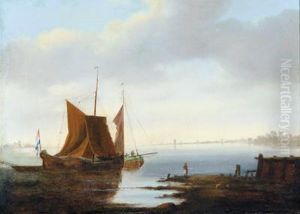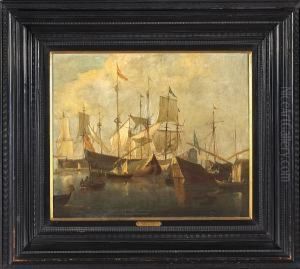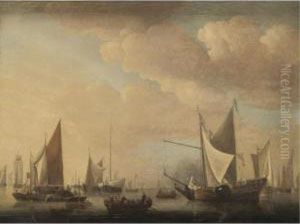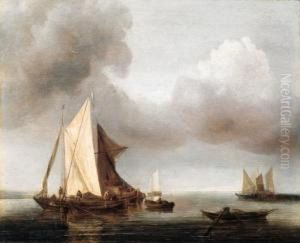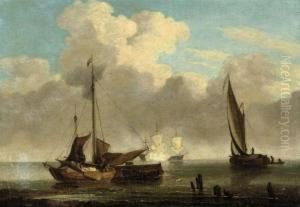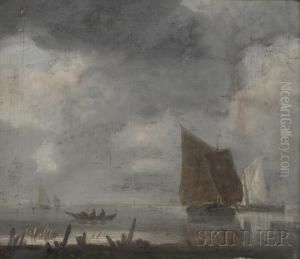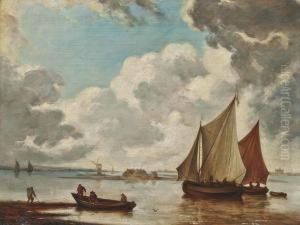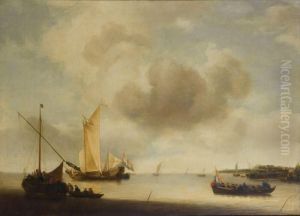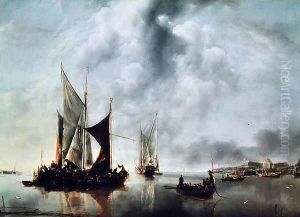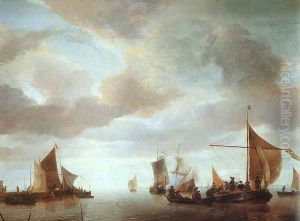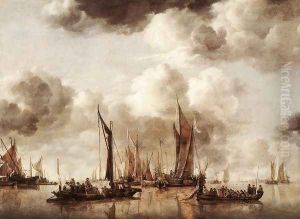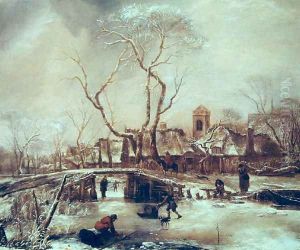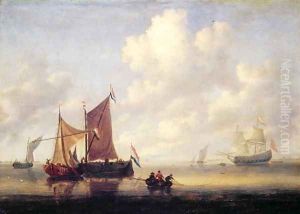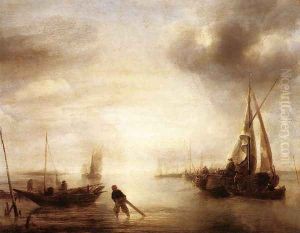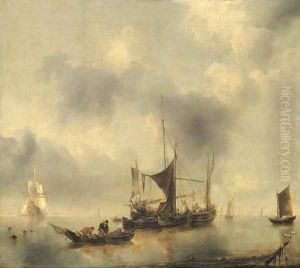Jan Van De Capelle Paintings
Jan van de Cappelle was a Dutch Golden Age painter noted for his works in marine art and landscape painting. Born in Amsterdam in 1626, he was the son of a wealthy dyer, Jochem Pietersz. van der Capelle, who was also an art collector and likely influenced Jan's interest in art. Despite his father's profession, Jan did not follow in his footsteps; instead, he developed a passion for painting, which he pursued alongside his career as a businessman.
Jan van de Cappelle is best known for his calm and atmospheric depictions of the sea, rivers, and Dutch waterways, often populated with ships and boats under various weather conditions. His works are characterized by a refined use of color and light, with a particular talent for rendering the effects of sunlight on water and the sky. He was also adept at painting winter landscapes and ice scenes, which were popular in the 17th-century Dutch art market.
Although not much is known about his training as an artist, van de Cappelle's work demonstrates a high degree of skill and suggests that he may have been self-taught or learned by studying the works of other artists. He was a contemporary of other famous Dutch marine painters like Simon de Vlieger and Willem van de Velde the Elder, and his style bears similarities to theirs.
Cappelle was not prolific but his work was highly valued during his lifetime. Unlike many artists of his time, he did not depend on painting for his livelihood, as he had income from his family's dyeing business and his own investments. This may have allowed him to be more selective in the commissions he accepted and the works he produced.
Jan van de Cappelle was also a collector of art and an art dealer. He died in Amsterdam in 1679, and after his death, his collection of paintings, drawings, and prints was sold at auction. Today, his works are held in high esteem and can be found in major museums around the world, including the Rijksmuseum in Amsterdam, the National Gallery in London, and the Metropolitan Museum of Art in New York.
